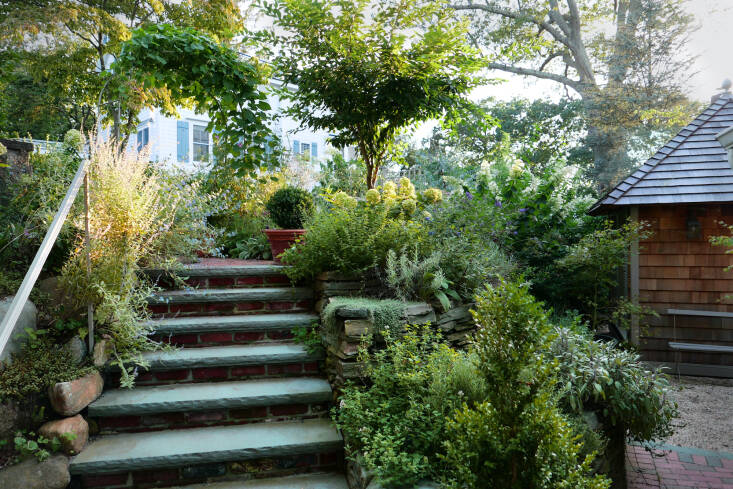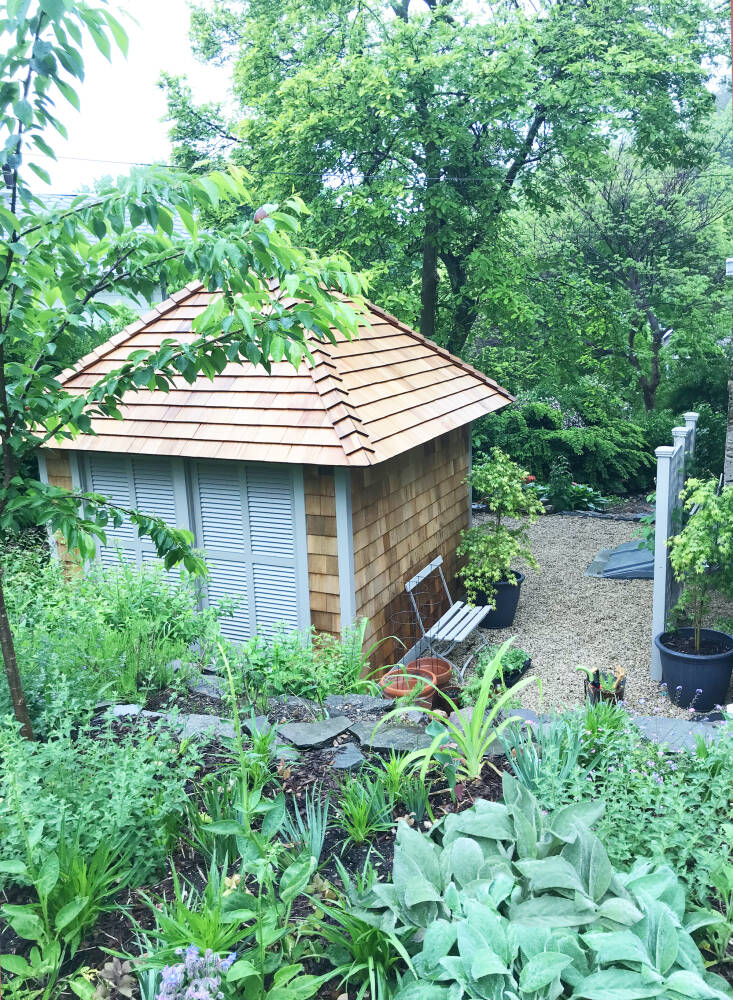A few years ago, I wrote about the lovely NYC apartment creative director Matthew Axe shares with his husband, Peyton Hays (you can read the Remodelista story here.) During our interview, he told me that they were about to embark on a renovation of their cottage in Sea Cliff, a small village on the North Shore of Long Island, and spoke about it the way one would gush about starting a new career—that is, with equal parts trepidation and excitement.
Today, their second home is nearly completely remodeled—complete with a beautiful terraced garden. The two are beginner gardeners, and it took time and patience to figure out what works and what doesn’t on their property. Mistakes were made. Plants were lost. Plans were redrawn. But those errors have led, ultimately, to the thriving garden they have.
“I still have failures,” Matthew is quick to note. “I’ve tried lupines all over the garden in shade, semi shade, and full sun, from seed and full grown plants—but still no luck.” Below, he walks us through the many lessons the couple has learned designing their garden, a forever work in progress.
Photography by Matthew Axe.
1. Focus first on the hedges.

“We inherited the foundational elements of our garden from the previous owners. During the first round of planning and reconfiguring, I concentrated on the interior of the garden. In hindsight I wished I’d concentrated first on the hedging. These take the most time to grow, but also as they do grow they change the conditions for the plants.”
2. Go with the flow.

“When I started to plan the garden, I created an eating/sitting area in a spot up some steps. We ended up rarely using it—it was too far to go with food and drinks. We now use an existing brick patio next to the kitchen and use it all the time to entertain. Figure out where you naturally gravitate. The same could be said of paths in the garden; see where you naturally walk, before you go to the trouble of laying a path.”
3. Design for the garden you have, not the one you want.

“I visited Beth Chatto’s garden in Elmstead, Essex, England, and I was not only
inspired by the gravel garden she created from a car park but also fascinated by her mantra: ‘the right plant, for the right place.’ As a beginner, it can be easy to choose a favorite plant or flower and decide to grow it, but over the last few years I have had the most success looking and seeing which places in my garden favor which plants. Our garden in some parts is full sun or deep dry shade in others. We now choose plants for the conditions, and then select varieties that favor this.”
4. Get your feet wet with herbs.
“Three years ago when we started working in our garden, we really didn’t know very much…I think the important thing is to start, be ready for success and for a few failures. Our starting point was some herbs, which were relatively easy and edible, too. They grew and so did our confidence.”
5. Plan for blooms beyond spring.

“In our garden, May to early June is a mass of color. We planted hundreds of allium bulbs and grew many foxgloves from seed only to find when these were finished, we had a very monotone green garden. A neighbor suggested leaving space for annuals with lime green foliage and bright flowers and also having pots to place in borders to inject some colur. I thought these were two really lovely suggestions. Next year!”
6. Don’t forget about drainage.

“Our garden is on a slope, so the previous owners did a really good job (so far) of creating a way for the water to run off. We’ve also added several gravel areas, which are relatively maintenance-free and improve the drainage. We are planning to re-roof our property and plan to have rain butts [rain barrels] on many of the fall pipes to catch the water to use for watering the plants.”
For more on how to start a garden, see:
- 10 Things Nobody Tells You About Your First Garden
- Your First Garden: 5 Rookie Mistakes to Avoid This Spring
- 10 Tips for the Beginning Gardener—What I Learned in Year One









Have a Question or Comment About This Post?
Join the conversation